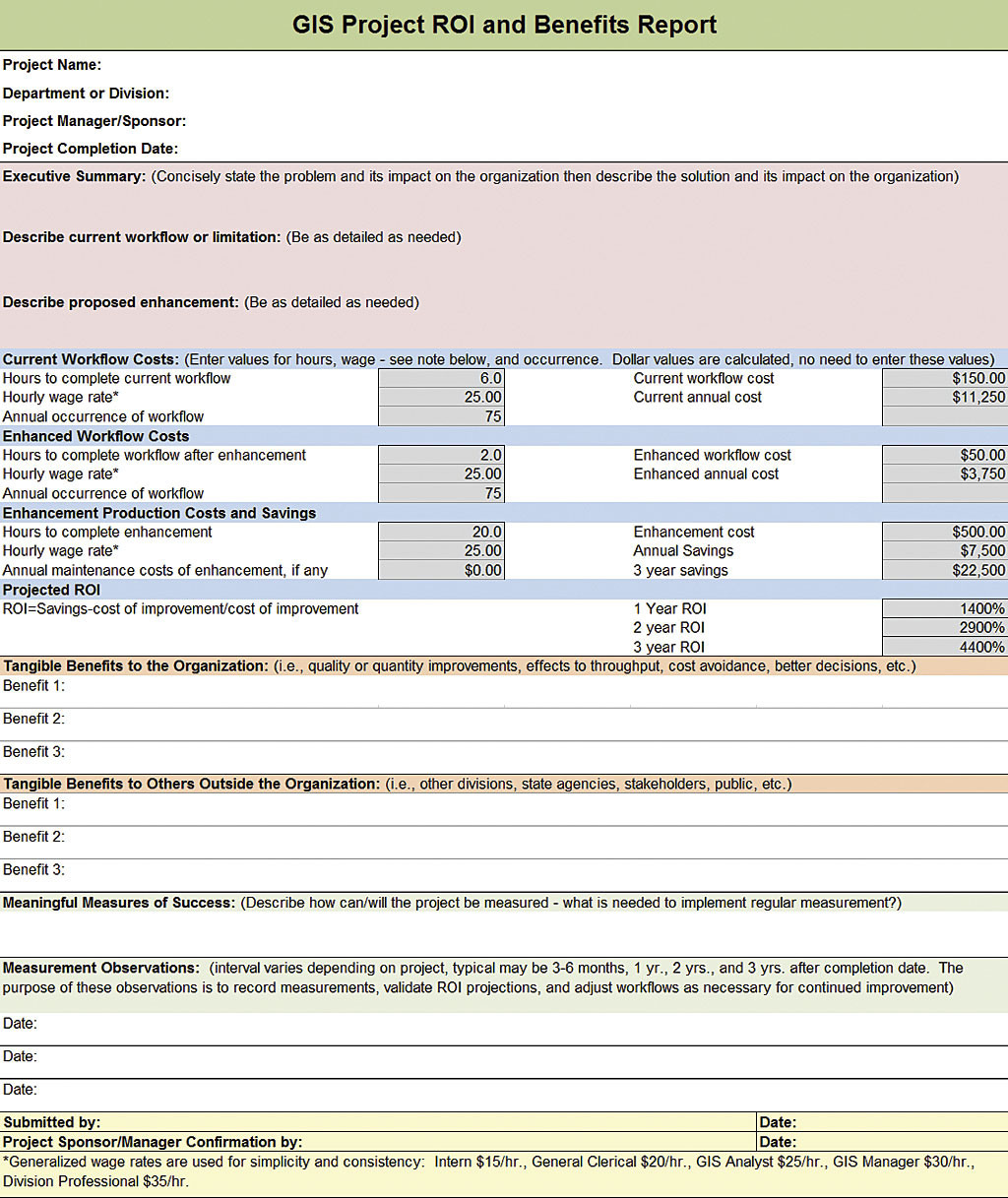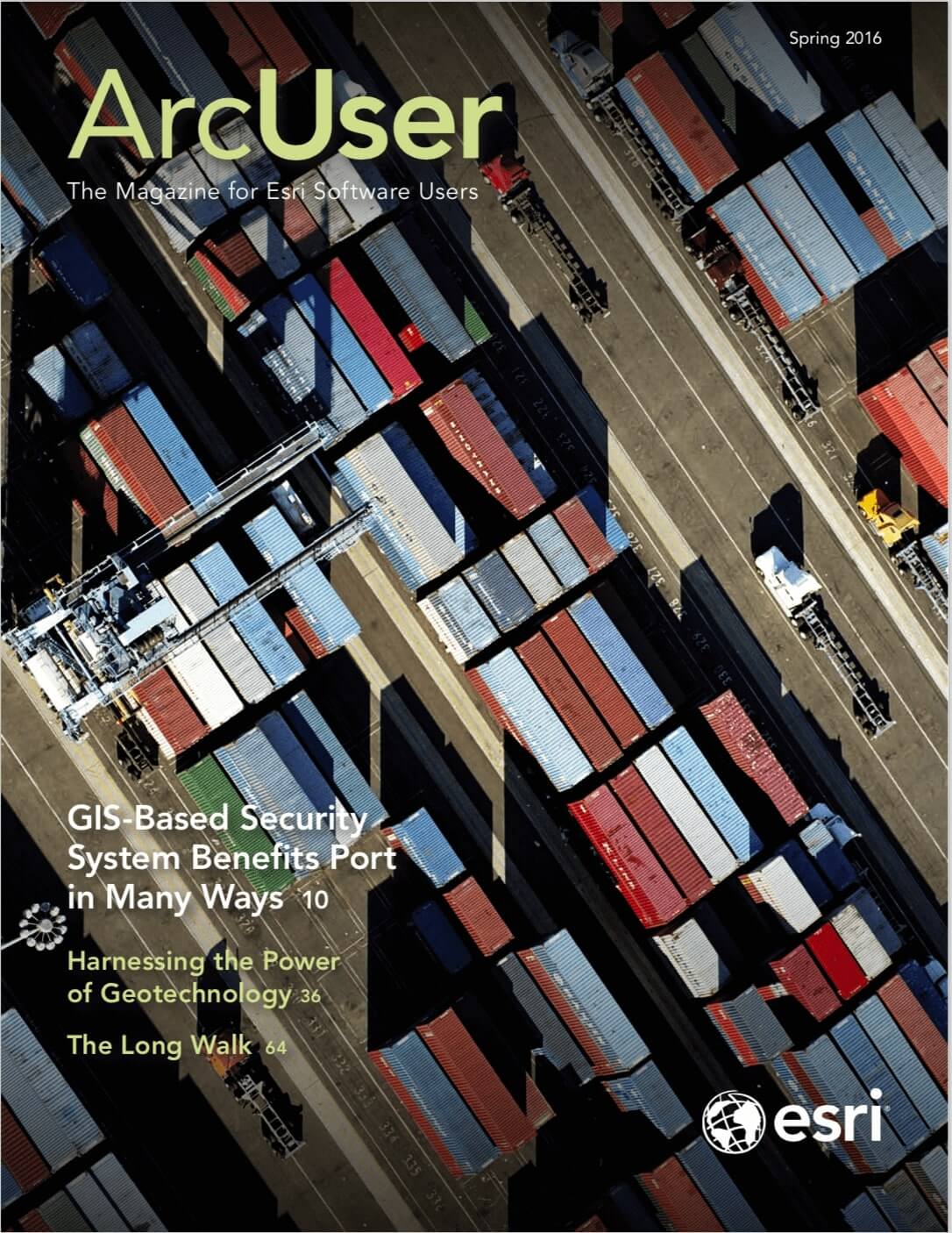In my previous article in the winter 2016 issue of ArcUser, “The ROI Mind-Set for GIS Managers,” I emphasized that the purpose of a GIS return on investment (ROI) effort is to discover and communicate the value that GIS (and you) deliver to your organization.
I mentioned that there may be many GIS professionals who have reasons for not spending time on ROI studies. One of those reasons could be that they don’t know where to start or how to do ROI. This article addresses that very issue: how to get your organization started documenting ROI.
Who Is Your Audience
Let’s first consider: who are you documenting ROI for? The audience for your ROI results are the people that made the choice to invest in your GIS program whether it was to start or continue it. Let’s also include the people who review your performance.
The people who set the goals for your organization should also be included, as they may have more than a passing interest in knowing what you have done for them lately. You will recall from our previous discussion that these organizational leaders can be fickle. They need constant reminders of your impact.
There is one person in your organization who cannot be left off this audience list. Although often underestimating their contributions and influence, this person plays a key organizational role. This person is you.
Throughout your career, you will engage in hundreds of projects that will help others accomplish important tasks. Each time you document your GIS results in an ROI report, you get to keep a piece of that project for yourself. You help define your value. You document the difference you make. With this knowledge, you will always be able to answer the question, what have you done for us lately?
Key References
Before delving into the nuts and bolts of defining GIS value, let’s look at two pivotal books on the subject. I want to give credit where credit is due. These are essential references for understanding GIS, its management, and its ROI. I often find myself pondering some core GIS principle only to discover these authors have already “gone down that road” and then drawn a map for the rest of us.
The first is Thinking about GIS by Roger Tomlinson. While Tomlinson’s book does not focus specifically on ROI, he explains many core components of GIS success that naturally spill into ROI as easily as rivers flow to the ocean.
The other book, The Business Benefits of GIS, An ROI Approach, by David Maguire, Victoria Kouyoumjian, and Ross Smith, will give you an understanding of the methodology for conducting a comprehensive ROI study within a dynamic organization. These authors are thought leaders in the GIS field.
Starting Your Journey
The ROI journey that I am asking you to consider does differ from these books in a significant way. After reading these books, a GIS professional could likely conclude that that ROI documentation requires a costly, mission-critical project or new GIS program, a team of people to research and document, and the dedication of a good portion of a year to produce a complete report. It’s no wonder few GIS professionals raise their hands when asked if they measure their GIS results. Perhaps, if we change our assumptions about GIS ROI and our approach to it, we could convince more GIS professionals to document their work and its impact on their organization.

ROI at DNR
In looking at the multitude of GIS projects conducted within the Utah Department of Natural Resources (DNR), it was evident that we did very few high-cost GIS projects. The vast majority of GIS effort involved projects that just consumed staff time or only required a modest investment. Surely these projects produce benefits, so why not examine these projects and their impact on our department?
To undertake ROI tracking for smaller GIS projects, it made sense to consider an abbreviated ROI process. DNR was intrigued by this concept for several reasons. First, like every other organization, we have GIS managers who are busy. With a short, focused ROI process, documenting results would be more likely to happen rather than using an ROI process that required many months of effort. Second, if fairly simple information was collected, a single staff member could complete an ROI study. This would lead to the creation of more documented GIS value. Third, creating something new for GIS staff to do represented change, and change is not always easy to implement. A small change is easier to implement than a big change, and we were fine with taking baby steps into ROI.
The fact that an ROI study could be completed in a short time by a single person or small team created a greater sense that documentation efforts were personally beneficial to our GIS staff. With knowledge gained from completing an ROI report for a small project, we felt we would be better prepared to handle ROI reporting for larger, more complex GIS projects in the future.
Our goal at DNR was to create a one-page GIS ROI report. The report’s information needed to be fairly simple to collect and include information relevant to our organization. As a government agency, we are often asked for efficiency measures, so we knew we needed to hone in on business workflows and how GIS projects affect them. We asked our finance and HR teams to help us create/validate a simple way to document workflows and other measures critical to our department mission.
When considering ROI content, we believed it was important to ask for qualitative benefits in addition to the quantitative data that provided the numerical score of ROI. In addition, DNR is interested in benefits that extend beyond our own organization because they exemplify efforts to break down information silos and foster more interagency workflows and information sharing. We were able to squeeze all the information into a report template on a single Microsoft Excel page. We consider this GIS ROI Report template to be a work in progress.
The GIS ROI Report is fairly self-explanatory. However, there are some points worth mentioning. We encourage our staff to write compelling executive summaries to ensure that the business impacts are well understood by those that may not take the time to fully examine a project’s finer details. The workflow costs/savings are calculated fields, so the math is automatically worked out. DNR believes it is important to document the specific measurements of GIS project success to get staff thinking about what it takes to track project performance and then take the actions needed to validate assumptions and results over time. We ask that all GIS ROI Reports be confirmed by a project sponsor or staff manager so that the assumptions and information collected can be vetted by management. Our hourly wage information for various staff levels is suggested so that the collection of salary information is not an uncomfortable/inappropriate situation for GIS staff and helps ensure consistency across the department.
The DNR GIS ROI and Benefits Report template is available for you to download. You can use it to give abbreviated ROI reporting a try. If you find ways to improve the report, please pass these suggestions back to us.
In my next article, I will share some specific examples of DNR’s GIS ROI and Benefits Report and summarize what we have learned from using this abbreviated ROI Report over the past two years.

